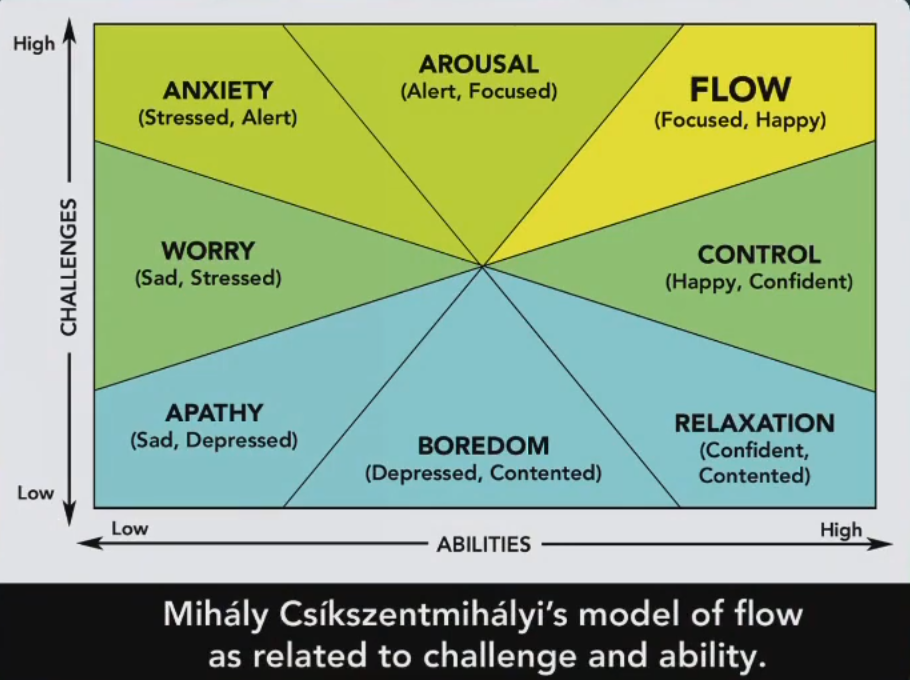

Most people are unimpressed by the fact that flow provides an optimal subjective experience, but their interest immediately perks up at any suggestion that it might improve performance. If it could be demonstrated that a fullback played harder if he was in flow, or that an engineer turned in a better product if he was in flow, then they would immediately embrace the concept and make a great deal of it. This, of course, would effectively destroy the autotelic nature of the experience. – Trying Not to Try by Edward Slingerland
There is a way to solve the above mentioned conflict by learning
Tools
Notes
- Peter Limberg and Guy Sengstock talk about phenomenon of life phases being in flow state(infantil grandiocity, king and the fool)
- Kapil Gupta on the zone
- Different drugs enable different kinds of flow - That resonates for me even for mundane substances like caffeine, alcohol, and weed. (comment from thestoa chat on The Theory of Neural Annealing w/ Andrés Gómez Emilsson)
- Many practices point to a "flow" or "higher state"
- acronym S.T.E.R. to describe the key qualities of ecstasis (the heightened state that includes flow).
- Selflessness – loss of the sense of self or ego.
- Timelessness – distortion or disappearance of time perception.
- Effortlessness – a sense that actions unfold smoothly and easily.
- Richness – a heightened sense of information, vividness, and meaning.
Afferent and Efferent
| Type | Direction | Function | Example |
|---|---|---|---|
| Afferent | Body → Brain | Carries sensory input from the body to the central nervous system | Feeling the texture of a surface; hearing a sound |
| Efferent | Brain → Body | Carries motor commands or autonomic output from the CNS to the body | Moving your arm; regulating heart rate |
👉 Think: Afferent = “Arriving” at the brain. Efferent = “Exiting” the brain.
| STER Quality | Neural Shift | Afferent/Efferent Pattern |
|---|---|---|
| Selflessness | Quieted prefrontal self-systems | ↓ Afferent “self” signals |
| Timelessness | Reduced time-tracking in PFC | ↓ Afferent time data |
| Effortlessness | Optimized motor and autonomic control | ↑ Efficient efferent flow |
| Richness | Heightened sensory integration | ↑ Clean, high-fidelity afferent data |